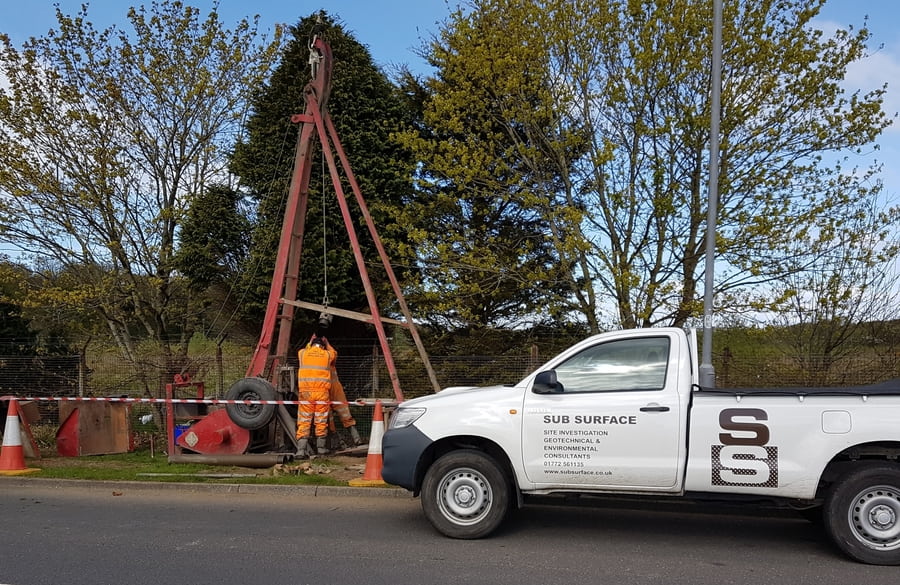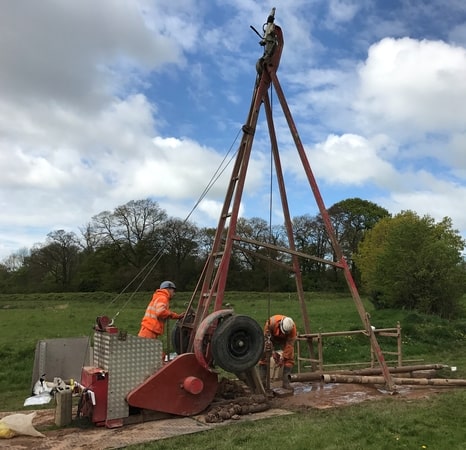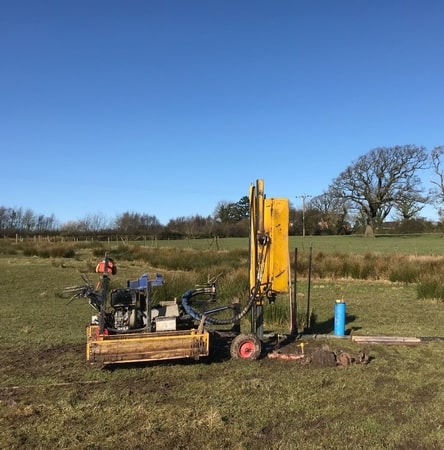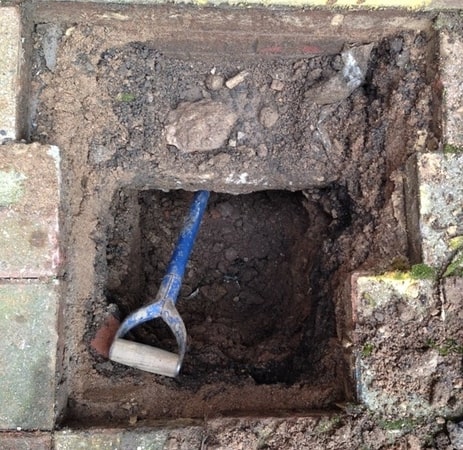What is a Site Investigation?
A Site Investigation is an intrusive investigation aimed at assessing the ground conditions and the general pattern of strata beneath a site for Geotechnical and Environmental purposes. All Site Investigations should be carried out accordance with the UK Specification for Ground Investigation, British Standard Code of Practice BS5930 and British and European Standard BS EN 1997-2 (EC7).
The aim of a Site Investigation is to satisfy our Clients’ requirements along with, where necessary, the various regulatory requirements of Planning Departments, Environmental Health Departments, Building Control Departments, the Environment Agency and property transactions.
To get a quote for any of our Site Investigation services, please email your regional Sub Surface Contracts Manager or fill in our Quick Contact Form.
Site Investigation Services
Sub Surface offer a comprehensive range of Site Investigation services including (but not limited to):
(click the bullet point to take you to the associated page)
- Phase 2 Site Investigation
- Foundation Assessment
- Safe Bearing Pressures
- Shallow Mine Workings
- Subsidence (Failed Foundations)
- Slope Stability Analysis
- Retaining Walls and Basements
- Earthworks
- Road Design (CBR Test)
- Sewer Construction
- Gypsum Solution Features
- Chalk Solution Features
- Percolation Tests
- BRE Digest 365 Soakaway Tests
- Phase 2 Site Investigations
- Contamination Land Assessment
- Ground Gas Risk Assessment
- Groundwater Risk Assessment
- Waste Classification
- WAC Testing
- Material Management Plans
- Phase 3 Remediation Strategies
- Phase 4 Validation Reports
- Topsoil Validation
- Gas Membrane Installation (Validation)
- Asbestos Screening
- Water Pipeline Risk Assessments
- Generic Quantitative Risk Assessments (GQRA)
- Detailed Quantitative Risk Assessments (DQRA)
What are the Different Types of Intrusive Site Investigation Techniques?
There are several types of intrusive Site Investigation techniques, each with its own advantages and limitations. The choice of technique is influenced by anticipated ground conditions and the clients’ requirements. Some of the most common methods used by Sub Surface include:
What is the Traditional Site Investigation Process?
The traditional Site Investigation process follows a phased approach where each stage outlines the requirements for the subsequent one:
- Phase 1 Desk Study
- Phase 2 Site Investigation
- Phase 3 Remediation Strategy (if required)
- Phase 4 Validation Report (if required)
Commencing the Site Investigation process with a Phase 1 Desk Study offers a more sustainable solution and has the potential to reduce costs. The Phase 1 Desk Study delves into the historical, geological, and environmental setting of the site, identifying any site-specific items that require assessment. Subsequently, a targeted Phase 2 Site Investigation can be conducted reducing the potential for unforeseen ground conditions, ultimately preventing delays and and ensuring a more seamless project progression.
What Pre Site Investigation Surveys do Sub Surface offer?
Prior to any Site Investigation, if required, we offer a range of surveying options, including:
- CAT Scan
- Underground Utility Plans Search
- Ground Penetrating Radar (GPR) Survey
- Topographical Survey
- Preliminary Unexploded Ordnance (UXO) Risk Assessment
- Detailed UXO Risk Assessment
- Ecological Survey
- Archaeological Survey
What happens after the Site Investigation (Geotechnical)?
Following the Site Investigation, our Geotechnical and Geo-Environmental Engineers will subsequently log the samples in accordance with BS EN ISO 14688-1, BS EN ISO 14689-1 and CIRIA 574
A Sub Surface Contracts Manager will then create a laboratory testing schedule based on the encountered ground conditions and project requirements. Sub Surface Laboratories are fully equipped to conduct soil testing to BS1377 and rock testing to ISRM 1974-2006.
Following completion of the laboratory testing, a professionally qualified Engineer will write a Factual report, Interpretative Report or Ground Investigation Report (GIR).
What is included in a Ground Investigation Report (Geotechnical)?
All our Ground Investigation Reports are written to the current British Standards, Eurocode 7 Standards and National House Building Council (NHBC) Standards. Every project and development is different, however for a typical Foundation Assessment, our Interpretative Ground Investigation Reports would include:
- Engineer Logs
- In-situ Testing
- Laboratory Testing
- Shrinkage and swelling potential of clays/silts (cohesive strata)
- A preliminary Foundation Assessment
- Safe Bearing Pressures and/or Pile Loads
- Floor Slab Construction
- Groundwater Information
- Concrete Classification – Design Sulphate (DS) Class and Aggressive Chemical Environment for Concrete (ACEC) Classification
Additional items commonly incorporated within our Interpretative Reports include:
- A full Geology and Mining Appraisal
- Earth Pressure Coefficients for Retaining Walls and Basements
- CBR Values for Roads, Car Parks and Hardstandings
- Percolation and Soakaway Tests
- Settlement Calculations
- Slope Stability Analysis
- Contamination Analysis
- Landfill Gas Assessment
It should be noted that when developing a brownfield site and many greenfield sites, the Local Authority generally apply a prerequisite on the Planning Conditions requiring a Phase 1 Desktop Study prior to a Phase 2 Ground Investigation.
Why Sub Surface?
Sub Surface will design a site specific Site Investigation to satisfy the Client’s project requirements and any regulatory authorities. Our network of local offices across the UK allows us to provide a cost effective service nationwide. Sub Surface cater for all project types and sizes from small residential extensions to large corporate infrastructure projects. View our Case Studies.
Established in 1972 and with over 50+ years’ experience, Sub Surface has built a reputation as one of the leading independent Site Investigation Specialists, Geotechnical and Environmental Consultancies in the UK.
Our highly experienced and professionally qualified staff include Chartered Civil Engineers, Chartered Geologists, Chartered Environmentalists and a Qualified person under CL:AIRE DoW:CoP. Sub Surface and their employees are also members of professional institutions and industry bodies including the Institute of Civil Engineers (ICE), Institution of Environmental Sciences (IES), The Geological Society, Association of Geotechnical & Geoenvironmental Specialists (AGS) and British Drilling Association (BDA).
All our Site Investigations are carried out to the relevant British and European Standards including, BS 5930 and all our drillers have an NVQ in Land Drilling from the British Drilling Association. We are also accredited by Constructionline and CHAS.
The importance of a Site Investigation?
An integrated Ground Investigation Report with interpretation is generally required to satisfy the various regulatory requirements of Planning Departments, Environmental Health Departments, Building Control Departments and the Environment Agency.
A professional and comprehensive Site Investigation reduces the risk of unforeseen ground conditions during the construction phase, which could lead to significant cost implications and time delays.
Failure to undertake a comprehensive Site Investigation could pose significant risks to the health and safety of site workers, end users, and the general public, as well as environmental risks to human health, vegetation, and controlled waters. Additionally, there may be risks to the stability of structures and services, all of which will become the liability of the site owners and/or developers.
How much does a Site Investigation Cost?
The cost of a Site Investigation can vary significantly depending on many factors. These factors include the scope of work, proposed development, size of the site, location, the type of soil and geology in the area, the depth of investigation, and reporting and regulatory requirements, among others.
Sub Surface takes a personalised approach by designing site-specific ground investigation cost estimates tailored to the project requirements and the unique characteristics of the site. This ensures that our clients receive cost-effective ground investigation solutions, adding substantial value to their projects.
How can I Get a Quote?
If you would like a quote, please fill in our Quick Contact Form or contact your Regional Sub Surface Office (regional map via link) and email the following information (where necessary/available):
- Project requirements
- Site Location Plan
- Existing Site Plan
- Proposed Development Plan
- Phase 1 Desk Study
- Planning Conditions









